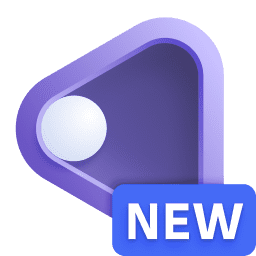Manage WMI extensions
- Latest Dynatrace
- How-to guide
- 3-min read
- Published Feb 01, 2022
Dynatrace provides you with a framework that you can use to extend your observability into data acquired directly for WMI-monitored Windows services and components. To this end, Dynatrace offers the facility to bring WMI data into Dynatrace at scale and in the context to all other data. This works best if you have OneAgent on the monitored Windows box, but it also works in an agentless manner.
First, check Dynatrace Hub to see if your technology is covered by an existing extension. If it isn't, you can build your own Dynatrace WMI extension to cover your Windows technology.
Before you begin
- Decide which of your Windows-based hosts will provide data for the extension.
- WMI extensions can run locally on an OneAgent (recommended) or remotely on an ActiveGate.
- When run locally on a Windows host, the extension will connect to the WMI interface automatically. Make sure Extension Execution Controller is enabled at the environment or selected host level. For more information, see Extension Execution Controller
- When monitored remotely, make sure your Windows-based ActiveGates belonging to the ActiveGate groups you designated for remote monitoring have remote permissions enabled. See WMI data source for more information.
Manage WMI extensions

Extension Manager
Latest Dynatrace
Now you can use the dedicated Extensions app to manage your extensions. It provides a similar activation and configuration workflow as Dynatrace Hub in the previous Dynatrace. Additionally, it gives you direct access to extension health monitoring.
- To use the app:
- In Dynatrace Hub
 , select and install the app.
, select and install the app. - The Hub listing provides information on the permissions required to use the app (the Technical information tab).
- In Dynatrace Hub
Dynatrace Hub provides a unified workflow to enable and manage extensions that will ingest WMI data into your Dynatrace environment.
Required permission: Change monitoring settings
- In Dynatrace Hub, search for a WMI extension. You can use the "WMI" keyword to filter results.
- Select and install the extension you're interested in. This enables the extension in your monitoring environment.
- Add a monitoring configuration so that the extension can begin collecting data.
Next, perform the following steps.
 Define monitoring source
Define monitoring source
Local monitoring
- Select the host, host group or management zone for which you will run the extension, or choose to monitor the whole environment. The host needs to be running a OneAgent that is enabled to run extensions.
- Select Next step.
Remote monitoring
- Select Monitor remotely and choose the ActiveGate group to determine which ActiveGate or ActiveGates will run the extension. A Windows-based ActiveGate host needs to have remote permissions enabled. See WMI data source for more information
- Select Next step.
- Select Add host and provide connection details.
- Host name or IP address
- Username with permissions to access WMI data remotely
- Password
You can add up to 100 hosts.
Authentication details passed to Dynatrace when activating monitoring configuration are obfuscated and it's impossible to retrieve them. When done, select Next step.
 Advanced properties Optional
Advanced properties Optional
Some WMI extensions may require additional configuration. When done, select Next step
 Activate extension
Activate extension
Provide final configuration details.
- Description
Text explaining details of this particular monitoring configuration. When troubleshooting monitoring, it can give your teams details of this particular monitoring configuration. - Feature sets
In highly segmented networks, feature sets can reflect the segments of your environment. You can use them to limit your monitoring to particular segments. Feature sets are predefined for each extension - Variables
Some extensions offer variables with which you can pass custom strings to your extension and report them in the environment, for example, as your dimension. Some extensions contain theext.activationtagvariable that is passed as a dimension to your monitoring configuration. You can use it to associate the reported metrics with a particular version of your monitoring configuration.
When done, select Activate.
Monitoring configuration as JSON
The extension activation wizard contains a dynamically updated JSON payload with your monitoring configuration. See Manage Extensions to learn how to use it to activate an extension using the Dynatrace API.
Explore WMI extensions
Related topics
 Extensions
Extensions